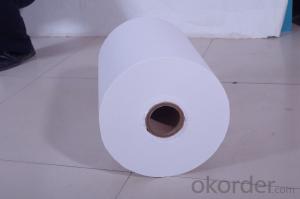When it comes to heating, ventilation, and air conditioning (HVAC) systems, one of the most critical components is the flexible duct connector. These connectors are responsible for linking various parts of the HVAC system, ensuring that air flows smoothly and efficiently throughout the building. But did you know that the quality of these connectors can significantly impact the performance of your HVAC system? Let’s dive into the world of HVAC flexible duct connectors and explore how to ensure airtight connections for optimal performance.
The Importance of Airtight Connections
A well-sealed connection is essential for maintaining the efficiency and effectiveness of your HVAC system. Leaks in the ductwork can lead to energy waste, uneven heating or cooling, and even poor indoor air quality. By ensuring that your duct connectors are airtight, you can prevent these issues and enjoy a comfortable, energy-efficient environment.
Understanding Flexible Duct Connectors
Flexible duct connectors are made from flexible materials that allow them to bend and adapt to the contours of your HVAC system. They are designed to connect rigid ducts to air handlers, diffusers, and other components. The flexibility of these connectors makes them ideal for installations where space is limited or where the ductwork needs to navigate around obstacles.
Types of Flexible Duct Connectors
There are several types of flexible duct connectors available on the market, each with its own set of advantages and disadvantages. Some of the most common types include:
– Insulated connectors: These connectors are wrapped in insulation to reduce heat loss or gain, making them suitable for temperature-sensitive applications.
– Non-insulated connectors: These connectors do not have any insulation, making them more cost-effective but less energy-efficient.
– Fire-resistant connectors: Designed to withstand high temperatures and resist fire, these connectors are ideal for applications where fire safety is a concern.
– Reinforced connectors: These connectors are made with additional reinforcement to withstand higher pressures and are suitable for systems with high airflow requirements.
How to Choose the Right Connector
Choosing the right flexible duct connector for your HVAC system is crucial for ensuring airtight connections and optimal performance. Here are some factors to consider when selecting a connector:
– Material compatibility: Ensure that the connector material is compatible with the duct material and the environment in which it will be used.
– Temperature range: Consider the temperature range the connector will be exposed to and choose one that can handle the expected temperatures.
– Pressure rating: Check the pressure rating of the connector to ensure it can handle the airflow requirements of your system.
– Fire resistance: If fire safety is a concern, opt for fire-resistant connectors.
– Ease of installation: Some connectors are easier to install than others, so consider the level of difficulty when making your choice.
Installation Best Practices
Proper installation is key to achieving airtight connections with flexible duct connectors. Here are some best practices to follow during installation:
– Clean the surfaces: Before connecting, ensure that the surfaces of the ducts and connectors are clean and free of debris.
– Use the right tools: Utilize the appropriate tools for the job, such as duct tape or clamps, to secure the connection.
– Check for proper fit: Make sure the connector fits snugly over the duct and is not twisted or damaged.
– Seal the connection: Apply a high-quality sealant or tape to create an airtight seal between the connector and the duct.
– Inspect regularly: Regularly inspect the connections for signs of wear or damage and replace them as needed.
Common Issues and Troubleshooting
Even with the best installation practices, you may encounter issues with your flexible duct connectors over time. Here are some common problems and how to address them:
– Leakage: If you suspect a leak, inspect the connection for gaps or damage. Repair or replace the connector as needed.
– Sagging: Over time, the weight of the duct may cause the connector to sag, leading to poor airflow. Reinforce the connector or replace it with a more robust option.
– Damage: Connectors can become damaged due to wear and tear or external factors. Inspect for damage and replace as necessary.
– Corrosion: In humid environments, connectors may corrode over time. Choose connectors made from corrosion-resistant materials to prevent this issue.
The Impact of Poor Connections on HVAC Systems
Neglecting the importance of airtight connections can have several negative consequences for your HVAC system:
– Reduced efficiency: Leaky ducts can lead to energy waste, as the system has to work harder to maintain the desired temperature.
– Uneven heating or cooling: Inconsistent airflow can result in some areas of the building being too hot or too cold.
– Poor indoor air quality: Leaks can allow contaminants to enter the duct system, affecting the quality of the air you breathe.
– Increased maintenance costs: Regularly repairing or replacing damaged connectors can become costly over time.
– Shortened system lifespan: A poorly connected duct system can put additional strain on the HVAC components, leading to a shorter lifespan.
Conclusion
In conclusion, the flexible duct connectors in your HVAC system play a vital role in maintaining airtight connections and ensuring optimal performance. By understanding the different types of connectors, choosing the right one for your system, and following best practices for installation and maintenance, you can prevent common issues and enjoy a comfortable, energy-efficient environment. So, the next time you’re working on your HVAC system, don’t forget the importance of those seemingly small, yet incredibly important, flexible duct connectors.

